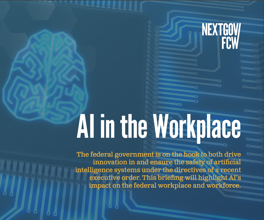A crib sheet for the transition team
FCW's Dot-Gov Thursday column presents an outline for new executives and managers entering the federal government with the next administration
New executives and managers entering the federal government as part of the next administration will need to begin participating quickly and meaningfully. The need for e-government to move forward in Internet time creates a further sense of urgency.
To that end, the following outline can serve as a "crib sheet" for new executives and managers to help them understand the federal environment. The e-government crib sheet categorizes e-government issues and activities into a seven-dimensional framework: architectures, business, management, leadership and culture, policy, relationship management, and technology.
It is important to think about all seven dimensions because conducting business via the World Wide Web is much broader than just implementing technology. Leadership, relationship management, content policies and many more issues confront the business manager on the Web.
Many of the topics listed have been the subject of previous FCW Dot-Gov Thursday articles. Links to these columns and other sources are included for additional information.
The seven-dimensional model
- "Web leads way for customer service" [FCW.com, May 18, 2000]
- "One government, on the Web" [FCW.com, May 4, 2000]
- "A call for an IT architecture" [FCW.com, March 2, 2000]
- "Privacy, security on the Web require business know-how" [FCW.com, Mar. 23, 2000]
- "Can agencies accept ads, fees?" [FCW.com, June 8, 2000]
- Outline for capital planning
- "10 skills federal Webmasters need" [FCW.com, March 30, 2000]
- "How to choose what services to post on a Web" [FCW.com, Feb. 10, 2000]
- "Web managers play crucial roles in agency management" [FCW.com, Jan. 20, 2000]
- "Reviewing Web trends" [FCW.com, Jan. 1, 2000]
- Key Information Content Issues and Laws Dealing with the Web
- Key Policies for New Webmasters
- "Drawing the line for federal Webmasters" [FCW.com, July 13, 2000]
- "Online selling can get complicated" [FCW.com, June 22, 2000]
- "The Web, accessibility and 'undue burden'" [FCW.com, June 15, 2000]
- "Users, Webmasters beware" [FCW.com, April 27, 2000]
- "Web may help rule-making process" [FCW.com, April 20, 2000]
- "Cyberspace challenges copyright laws" [FCW.com, April 13, 2000]
- "Privacy, security on the Web require business know-how" [FCW.com, March 23, 2000]
- "When is enough enough?" [FCW.com, March 16, 2000]
- "Affinity groups key to making government better" [FCW.com, Feb. 17, 2000]
- "Digging for Web data" [FCW.com, July 20, 2000]
- "Hackers' manners and methods" [FCW.com, June 28, 2000]
- "Online education, the Next Big Thing" [FCW.com, May 25, 2000]
- "Use the source, Luke" [FCW.com, May 11, 2000]
- "Privacy, security on the Web require business know-how" [FCW.com, March 23, 2000]
- "Better tech needed to advance the Web governmentwide" [FCW.com, Feb. 3, 2000]
- "It's time for real-time government" [FCW.com, Jan. 13, 2000]
- "How to make sure Web visitors get the right message" [FCW.com, Feb. 24, 2000]
- "The Web is no place for geek speak" [FCW.com, March 9, 2000]
- "Today is Tuesday, clean up your sites" [FCW.com, April 6, 2000]
1. Architectures: IT and, subsequently, Web infrastructures must be defined and organized according to architectures. Architectures define a blueprint for the orderly integration of new products and services into the agency's information infrastructure.
2. Business: This component is defined as those activities related to investing and budgeting activities, such as capital planning and portfolio management.
3. Management. This component includes such things as human resources and personnel management, managing a Web business, project management and training.
4. Leadership and culture: This component includes the structure and expectations of the federal workplace as well as internal and external politics.
5. Policy. This component is particularly important because of the significant differences between activities in the public and private sectors. Included are accessibility standards, contracting over the Internet, legislation, intellectual property issues, liability, personal use policies and privacy.
6. Relationship management. This component is uniquely driven by the Web, which highlights the expectation that agencies must create interactive participatory and collaborative environments.
7. Technology. The technology component as it relates to the Web is significantly different from other "traditional" technologies. Understanding the unique nature of the Web's technologies is important to conducting business via the Web. Search engines, cookies, scripts and other unique Web technologies create a whole new technological environment that needs some explanation to incoming executives and managers.
A further component is marketing. As the Web focuses government on service to the citizen, marketing becomes increasingly important. The Web is both a marketing channel and a distribution channel for goods and services. Here are some resources for further information.
In conclusion, here is a link to resources for federal Webmasters in a wide variety of topics, including e-commerce, financial management and policies. Key guidance for Webmasters on http://www.itpolicy.gsa.gov/eagency/homepagesubpages/collections.htm.
Kellett is founder of the Federal Web Business Council, co-chairman of the Federal WebMasters Forum and is director of GSA's Emerging IT Policies Division.
NEXT STORY: Pa. streamlines vendor procedures



